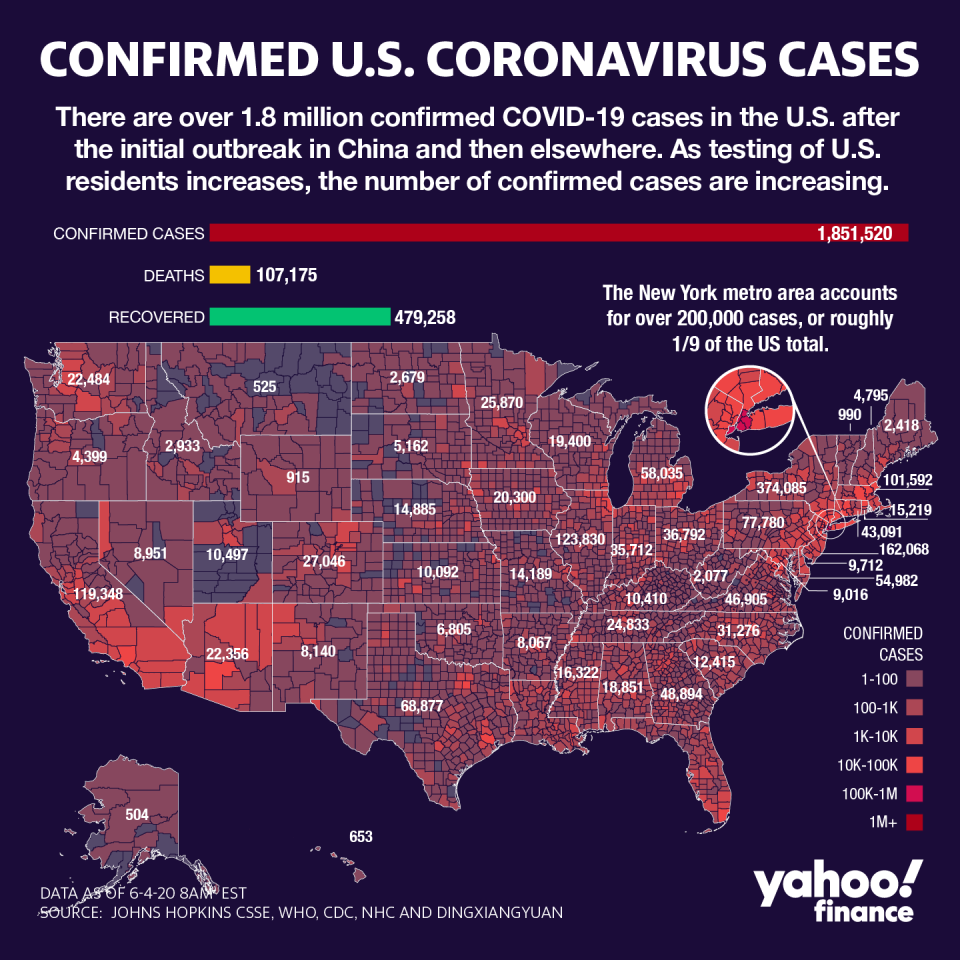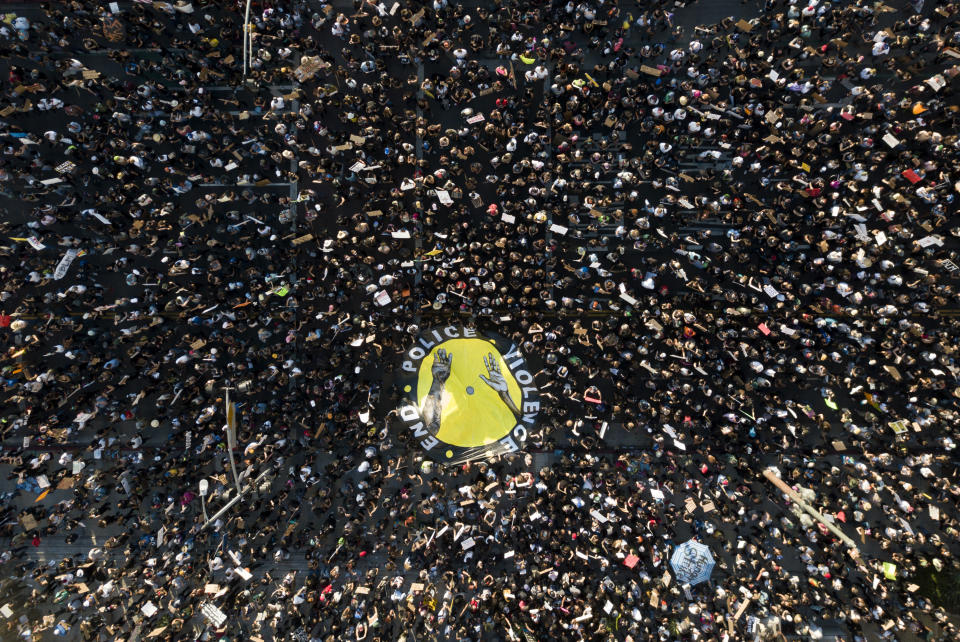Protests shine light on health inequality, and create a 'hodgepodge' to address the issue
The mass protests against racial injustice gripping the U.S. have put the topic persistent health disparities back on display, something that was already a major focus of the coronavirus pandemic.
Nationwide, scenes of marches — punctuated by widespread looting, rioting and a heavy police presence — have come to define a heady time in the world’s largest economy. The gripping images of protestors, prayers, mace and rubber bullets have only gotten more jarring since the uprising against the police killing of George Floyd in Minnesota co-mingled with efforts to relax the COVID-19 lockdowns that have thrown millions out of work.
However, the public response to the Floyd killing are a vignette of a larger struggle to address social inequality — with health outcomes being a major part of the equation. An increasing number of public health experts have called for a wide-ranging set of solutions to change the status quo, especially with fears growing that the protests could easily become ‘super-spreader’ events.
“Stopping the pandemic is going to depend on our ability to take care of our most medically and socially vulnerable,” said Scott Gottlieb, former FDA commissioner, on CBS’s Face The Nation Sunday.
“Black Americans and Latino Americans have been disproportionately impacted by COVID. I think that’s a symptom of broader racial inequities in our country that we need to work to resolve,” said Gottlieb, who has emerged as an authoritative independent voice on the pandemic’s effects.

The outbreak has infected over 6.5 million people worldwide and killed more than 370,000, has spread much more quickly through the U.S. — which still has the highest number of cases worldwide. The case count in the U.S. is more than 1.7 million, with more than 104,000 deaths: Of those, a disproportionate number have been African-American.
The underlying factors fueling this disparity include socio-economic factors like poor living conditions, lack of access to food and stable employment — all considered social determinants of health.
According to Blue Cross Blue Shield Association data shared with Yahoo Finance, there’s a strong correlation between social factors and the outbreak.
Among all Americans, 41 million live in areas that sorely lack primary care providers, and nearly 20% of them are at higher risk for COVID-19 hospitalizations.
In addition, 29 million Americans live in a nutrition “desert,” meaning there isn’t easy access to healthy food. Of those, 13.1 million — or just under half — are also in geographies with more COVID-19 cases, according to the organization.
‘Hodgepodge’ of folks examine the problem

Recently, Google’s non-profit arm announced a $1.5 million grant to three entities, with the goal of developing a data platform that tracks the health disparities. The objective is to build a robust source of information to track how the coronavirus outbreak has disproportionately affected minorities, and the lower end of the socioeconomic scale. It also aims to inform the policy response for an inevitable next outbreak.
Three of the recipients of Google’s money include the Morehouse School of Medicine in Georgia, non-profit Faith in Action’s Live Free project and advocacy group Hispanic Federation.
Daniel Dawes, executive director of government affairs and health policy at Morehouse, told Yahoo Finance the school’s platform will map cases and deaths in all 50 states, plus all U.S. territories to provide a detailed breakout by gender, race, ethnicity, and socioeconomic factors.
Morehouse’s data will include tracking where testing sites have been stood up; how contact tracing has been deployed; how treatments and government resources have been allocated; and look at the impact of each jurisdiction’s response and mitigation strategies.
Dawes is also looking to provide a report to the U.S. House Ways and Means Committee this month, in the wake of a May 27 hearing on the disproportionate impacts of the coronavirus.
“My idea was to say we know there’ve been a lot of politics determinants that exacerbated [socioeconomic factors], but we’ve never been able to realize equitable policy in the middle of a pandemic,” said Dawes, the author of a book on the topic.
While other sites have relied on publicly available data and state-by-state reporting, Dawes anticipates that pooling the resources of a number of entities, and forming an overseeing commission, will help. Those groups will include the NAACP, the National Council on Urban Indian Health, the Asian American Pacific Islander Health Forum and UnidosUS, among others.
“It’ll be a hodgepodge of folks that I don’t think have ever come together in this capacity before,” Dawes told Yahoo Finance, mirroring the approach of those looking specifically at minority issues.
Another data-heavy approach has come from North Carolina-based Atrium Health, which has been monitoring health disparities in its service area.
In doing so, Atrium was able to anticipate and close the gap, according to chief community officer Kinneil Coltman. She cited early Centers for Disease guidelines targeting anyone who traveled internationally to a country with an existing outbreak with having an unintentional bias against communities of color.
“So those early guidelines probably pulled the testing in favor of more affluent communities,” Coltman said. “So you did tend to, in those early days, see under-testing in lower income communities in general,” which had an adverse impact on minorities, she added.
In addition, Atrium put together a disparities task force and created a whole new model for testing — including eliminating barriers like referrals from a doctor, and extending hours of operations. Coltman also said community partnerships helped address food insecurity issues while getting more people tested.
“Our number one referral during COVID has actually been around food insecurity,” she said, with the success leading to inquiries from around the country.
Hardly reached, not hard-to-reach
Recently, the British Medical Journal (BMJ) published an article addressing the lack of testing in minority communities, which called out some who have misdiagnosed the problem.
“Health professionals often frame members of ethnic minority communities as ‘hard-to-reach’ because of low engagement in population health screening. However, it is more accurate to say these groups tend to be ‘hardly reached’ by those who fail to understand the needs of marginalised people,” the authors said.
The BMJ data looked at how to bridge the gap to reach these groups, including “tailored and multilingual communications,” more trained professionals and expanded access to health care.
CVS Health (CVS) has moved to address COVID-19 testing concerns, which have been exacerbated by existing solutions. Some testing sites supported by FEMA and local health systems have either not be on public transit routes, or did not allow walk-ups, thereby limiting options for urban-living individuals.
In addition, emergency rooms in some cities serve as primary care for the under- or uninsured, many of whom are minorities.
It’s why CVS began a drive-up or walk-up testing program in one underserved area (Dearborn, Mich.), and said it is opening nearly 500 more locations that focus on underserved populations.
Separately, Cooper Health System and Virtua Health — two fiercely competitive hospital systems — have teamed up to identify and test vulnerable communities, with pop-up testing in a large swath of the southern portion of southern New Jersey, a COVID hot zone. That includes providing walk-up testing for undocumented immigrants, Cooper co-CEO Kevin O’Dowd told Yahoo Finance.
The health systems have stood up six sites so far, with more planned as needed. Cooper’s blueprint moved to address the gap created by two mass testing run by FEMA that were in large, remote parking lots.
“A small percentage of the population has a car, and a large percent relies on mass transit. So, those sites were effectively closed off to residents of Camden,” O’Dowd said. The hospital has also dedicated resources to testing in ways that reduce the burn rate for protective gear.
But all of it comes at a cost.
“There will be financial losses with providing these services, and we don’t care,” O’Dowd said. “This is something we felt very strongly about.”
Anjalee Khemlani is a reporter at Yahoo Finance. Follow her on Twitter: @AnjKhem
Follow Yahoo Finance on Twitter, Facebook, Instagram, Flipboard, LinkedIn, and reddit.
Find live stock market quotes and the latest business and finance news.
